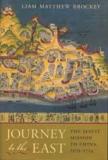Claiming Converts
Most people find few aspects of Jesuit history more fascinating than the mission of the Jesuits to China. Matteo Ricci, invariably depicted wearing Mandarin dress, has assumed legendary status as a precocious herald of cultural accommodation. He was succeeded by such other Jesuits of heroic stature as Johann Adam Schall von Bell and Ferdinand Verbiest, both of whom became directors of the Imperial Astronomical Bureau in Peking. The negative decision of the Holy See on the Chinese Rites controversy—which included the Jesuits’ stance that certain Confucian rituals of ancestor veneration were not idolatrous but essentially civic and social in nature—not only spelled the tragic end of the mission, though Jesuit presence in China dragged on for another half-century, but was used by enemies of the Jesuits in their successful campaign for the suppression of the order itself.
The general contours of the story, often heavily romanticized, are well known. We lacked, however, a sober and fleshed-out account. That is what Liam Matthew Brockey provides in Journey to the East, which is divided into two parts. The first is a narrative of the history of the mission, the second an analysis of the Jesuits’ pastoral means and methods. Be prepared—the story and the means and methods are probably not what you have been led to expect.
A seemingly impregnable myth about the mission is that the Jesuits conducted a campaign of evangelization from the top down: convert the emperor or the literati, and then the rest of the country would follow. Their efforts, in other words, were concentrated on the court. Although specialists have long recognized the myth as a distortion, Brockey demolishes it brick by brick, showing in fine detail how much energy the Jesuits put into working outside Peking with ordinary Chinese, many of them illiterate. Yes, the Jesuits wanted and needed converts from the upper strata and managed to gain a few, but they used their position at court to buy security for their pastoral activities elsewhere. Their approach in those activities was similar to the approach their brethren took in Europe, that is, to the approach they had learned before arriving in China.
Not surprisingly, the instrument the Jesuits used to sustain their converts in faith and devotion were confraternities, religious guilds that in Europe had been central to pastoral practice since the late Middle Ages. Members met at regular intervals to recite prayers, to encourage one another in their faith and, in time, to undertake works of mercy, such as conducting Christian burials for their members or caring for orphans and widows. Especially popular were the flagellation confraternities, of which, as of their European counterparts, public corporal penance was the hallmark.
Brockey tells a tale of heroic dedication and heartbreak. The fatal blow with the Rites decision was only the most devastating in a story where anything that could go wrong seemed destined at one point or another to go wrong and to knock down what had been built up with such great effort. The manpower shortage was endemic—in 1611 only 11 Jesuits were working in all of China, and in 1700 the number peaked at only 36. They were discouraged by the resistance their evangelizing efforts met. The Chinese might be attracted to the “Lord of Heaven,” but they balked at the Ten Commandments. Concubines were a particularly difficult problem.
Despite the Jesuits’ propaganda efforts, enticing new recruits from Europe never yielded as much as they hoped. Learning the language was an excruciating test of patience and humility. The Jesuits doubted and debated their approach and had to ward off criticisms that their efforts were not paying off. They were distrusted by other missionaries in the Far East, distrusted in Europe, where they were accused of betraying Christianity, and distrusted by their Chinese hosts. In 1664 Schall, Verbiest and others were jailed, and Schall was condemned to death. Once converts were made in tens of thousands, the routine of caring for them wore down even the most fervent. Nicolas Trigault, important to the mission in several capacities, committed suicide.
This excellent book is not for everybody. It is an analysis of the mission in its broad scope and pays relatively little attention to the Jesuits’ scientific and artistic activities at the imperial court. Its dense description might tell you more about the Jesuits’ pastoral engagements than you want to know. But if you have a serious interest in what went on in China, pick up Journey to the East. Written by a junior scholar as his first book, it just happens to be the best on the market, unlikely to be surpassed for many, many years to come.
This article also appeared in print, under the headline “Claiming Converts,” in the May 7, 2007, issue.







